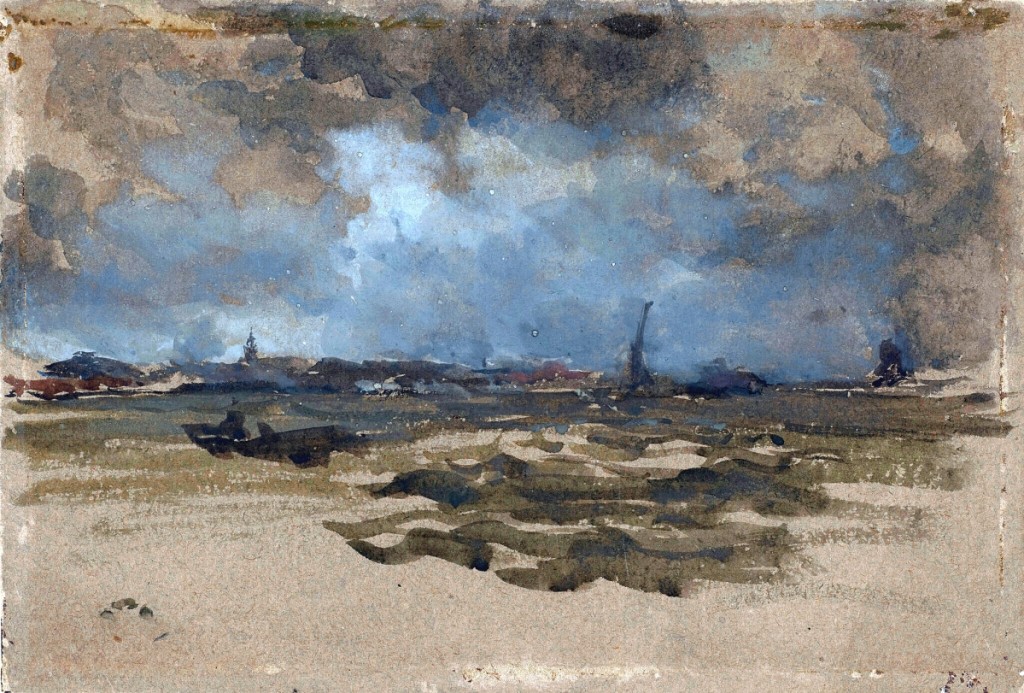Bonhams recently named Morgan Martin to head up its American art department. We wanted to get to know this relative newcomer a bit better so we reached out to him for his thoughts on the position and his upcoming sale.
Congrats on your recent promotion from specialist to head of the department for American art. Can you tell our readers a bit about your background?
Hello and thank you for the congratulations. It’s a really exciting time for me. I started with Bonhams on May 10, just 9 days before my first sale with the department on May 19, 2021. Before joining Bonhams I was in the Nineteenth Century European art department at Christie’s in New York.
What was it about the position at Bonhams that appealed to you?
While the position was greatly appealing to me to return to the American Art category, it was the company that really drew me in. Bonhams is smaller than other auction houses I have worked at recently, which means we are nimbler and more flexible when it comes to dealmaking and strategy. Being with Bonhams also means I have more autonomy to pursue business opportunities and build the sales. Last, but most importantly, the team here is great and really embodies the ethos of being “one team;” every person I have worked with here is collaborative and supportive.
According to your company biography, you also have experience with Nineteenth Century and Orientalist paintings – tell us about your background for that.
In May of 2018, I was given an amazing opportunity to join the Nineteenth Century European art department at Christie’s. I had taken classes on the various movements in college and handled property from the category before, but joining the department was jumping into the deep end of a very broad and rich area of art history. There are so many movements and schools, with artists overlapping and influencing one another; it is a complex category. From the melancholic interiors by Hammershøi to the rich landscapes of Corot and Courbet to the brushy and vibrant beach scenes by Sorolla to the opulent portraits of Boldini and Corcos to the eerie streets by Grimshaw; there is just so much to experience and learn.
With regard to American art, Nineteenth Century and Orientalist paintings, what was it about those categories that drew you to them?
Much like the Nineteenth Century category, American art is rich with variety and differing schools (of which Orientalism is interestingly a part of both). If one word could be used to describe these categories, it would be diverse; there is always a new artist or movement to explore and expand upon. My parents always joke that if I could have afforded to stay in school forever, I never would have graduated. It was very lucky for me that I have discovered a career that allows me to do this every day, as no two days are the same, and there are always new artworks to discover and research. I grew up in a rural town of 10,000 people in Wyoming and I have constantly sought to explore the world beyond those country roads.

“Stormy Sea” by James Abbott McNeill Whistler (1834-1903),
circa 1899-1900. Signed with artist’s device (lower left). Watercolor
and gouache on paper laid down on board, 6-7/8 by 10 inches ($80/120,000). Photo courtesy Bonhams.
Of the works you’ve handled in your career so far, what are some of the most memorable paintings or pieces?
While every picture is memorable and every collection special, there is one piece that sticks out to me quite vividly. An elderly woman walked into the small auction house I was working at in Long Island City with a black trash bag. In the bag was a very dirty oil painting on canvas with a broken stretcher and frame. I mentally prepared myself for the gentle let down, until I started looking closer. The work was signed and dated Tamayo 1925 and bore a label from “The New Bookstore and Gallery,” which was ran by famed art dealer Eugene Thaw early in his career, and listed Frank Crowninshield as the previous owner. After doing some research, we decided to let the market be the arbiter. It ended up selling for $85,000 hammer and has just been included in an exhibition of unpublished works by the artist at the Museo Tamayo in Mexico City that opened in December of 2021. Needless, to say, the consignor was very pleased with the results.
What are some of the upcoming highlights of your late May 2022 sale?
We have several interesting highlights from across the category, including James Abbott McNeil Whistler’s “Stormy Sea.” The initial request for an estimate came in through a cold call to a colleague. After scouring the catalogue raisonné of the artist, we were only able to find it based upon an old grainy image, no dimensions or medium. The only listed provenance for the work was that it was with William Bell Paterson in 1927, an art dealer on Old Bond Street in London. According to the current owner, this work has been in her family for more than 70 years. Another work in the sale is “Yellow Sailfish” by Milton Avery. This work was last seen by the public at an exhibition at the Firebird Gallery in Corpus Christie, Texas, in 1983. This impressive, monochromatic canvas depicting a singular Dhow boat was executed in 1960 during the most important period of Avery’s career. Another favorite of mine is “Maestro” by Ernie Barnes. This work comes to us from the collection of the Los Angeles Athletic Club and was included in the seminal exhibition for the artist at the High Museum in Atlanta, “The Beauty of the Ghetto: A Visual Tribute to the Spirit Heritage of Black America.” There are so many wonderful works in this sale that it is hard to pick just a few that I adore.
What are some of the elements of those works that you expect to drive interest in the works?
I would say the theme of these works is “re-discovery.” Most of these haven’t been seen by the public for decades and are incredibly fresh to market.
-Madelia Hickman Ring





